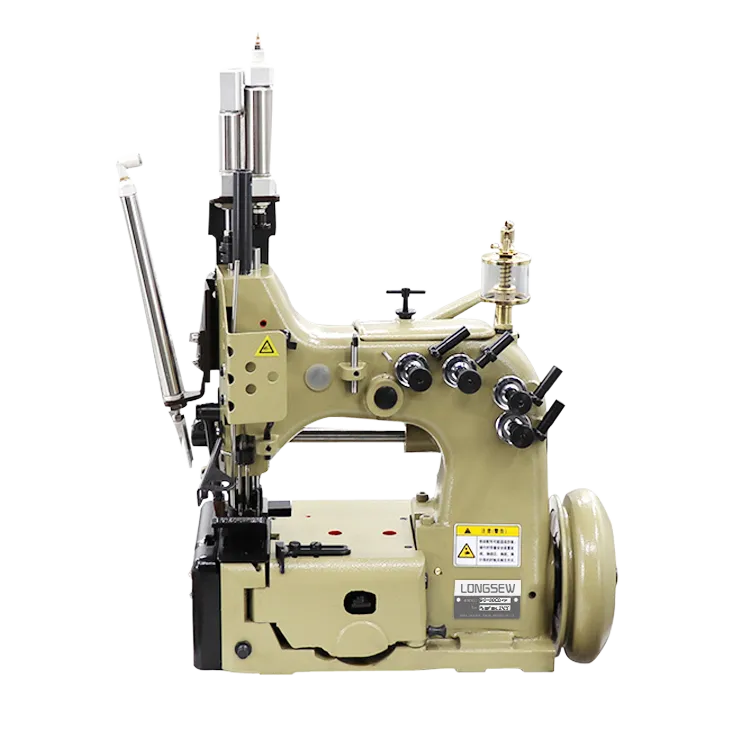Advanced Upholstery Stitching Machines for Precision Fabric Crafting and Seamless Design Solutions
The Art and Science of Upholstery Stitching Machines
In the realm of furniture design and manufacturing, upholstery plays a crucial role in both aesthetics and comfort. Upholstery stitching machines have revolutionized the industry, enhancing efficiency and precision in creating beautifully finished products. This article delves into the intricacies of these machines, their functionality, and their impact on the upholstery business.
Understanding Upholstery Stitching Machines
Upholstery stitching machines are specialized sewing machines designed to handle thick and heavy fabrics typically used in furniture coverings. Unlike ordinary sewing machines, these machines are built to withstand the rigors of stitching multiple layers of materials, including foam, batting, and fabric, often with added padding for comfort.
The design of these machines is thoughtful, featuring robust components that ensure durability and reliability. Many models are equipped with heavy-duty motors that provide the necessary power to sew through challenging materials seamlessly. The technology in modern upholstery stitching machines has advanced to support various stitching techniques, including straight stitching, zigzag stitching, and even decorative patterns to enhance visual appeal.
Features That Enhance Performance
One of the standout features of upholstery stitching machines is their adjustable stitch length. This capability allows upholsterers to customize stitches for different applications, ensuring that the seams are both strong and aesthetically pleasing. Furthermore, many machines come with walking feet, which help to move multiple layers of fabric through the machine evenly, preventing slipping and puckering—issues commonly encountered in upholstery work.
Another essential feature is the ability to handle different types of thread, from heavy-duty polyester to specialty threads designed for specific fabrics. The threading tension can also be adjusted to cater to the thickness and elasticity of the materials being sewn. As a result, upholstery stitching machines offer versatility that is essential for today's dynamic upholstery projects.
The Importance of Automation
In recent years, the trend towards automation in the manufacturing process has reached the upholstery sector. Automated stitching machines are becoming increasingly popular, allowing for higher production rates and consistent quality. These machines often incorporate computer controls that enable programmable stitching patterns, ensuring that every piece produced maintains the same level of quality.
upholstery stitching machine

The automation of upholstery stitching also reduces labor costs and minimizes human error
. Skilled seamstresses can now focus on more complex tasks that require creativity and personal touch rather than repetitive stitching, thus elevating the overall craftsmanship of upholstered items.The Impact on the Upholstery Industry
The advent of upholstery stitching machines has had a profound impact on the upholstery industry. Not only has it increased productivity, but it has also allowed for greater design complexity and innovation. Manufacturers can experiment with new fabrics and textures, knowing they have the tools to implement their visions effectively.
Moreover, the efficiency brought by these machines translates to faster turnaround times for customers. In a business environment where speed and quality can make or break a company, upholstery stitching machines provide the necessary edge. Custom furniture makers and large-scale manufacturers alike benefit from reduced lead times, allowing them to meet consumer demands swiftly.
Sustainability and Future Trends
As the upholstery industry evolves, sustainability has become a key focus. Modern upholstery stitching machines are being designed with sustainability in mind, utilizing energy-efficient motors and materials that minimize environmental impact. Additionally, trends such as using recycled fabrics and eco-friendly threads are influencing machine design and functionality.
Looking to the future, we can expect advancements in technology to further enhance the capabilities of upholstery stitching machines. Innovations such as AI integration could lead to even more precise stitching patterns and predictive maintenance, ensuring machines remain in optimal condition.
Conclusion
Upholstery stitching machines have ushered in a new era for the upholstery industry. Their ability to combine strength, precision, and efficiency transforms how furniture is made, allowing manufacturers to push the boundaries of design. As technology continues to advance, the possibilities are limitless, promising a future where upholstery not only enhances the look of our homes but does so responsibly and innovatively. Whether for personal use or commercial production, these machines stand as pillars of progress in an ever-evolving craft.
-
Industrial Cylinder Arm Sewing Machine: Revolutionizing Heavy-Duty SewingNewsJul.28,2025
-
Cylinder Arm Sewing Machine: Perfect for Special Sewing ApplicationsNewsJul.28,2025
-
Cylinder Bed Sewing Machine: Essential for Sewing Complex MaterialsNewsJul.28,2025
-
Heavy Duty Sewing Machine: The Essential Tool for Industrial ApplicationsNewsJul.28,2025
-
Computerized Pattern Sewing Machine: Revolutionizing Precision StitchingNewsJul.28,2025
-
Heavy Duty Industrial Sewing Machine: Power Meets PrecisionNewsJul.28,2025
-
Leather Sewing Machine: The Industrial Standard for Tough MaterialsNewsJul.18,2025





























